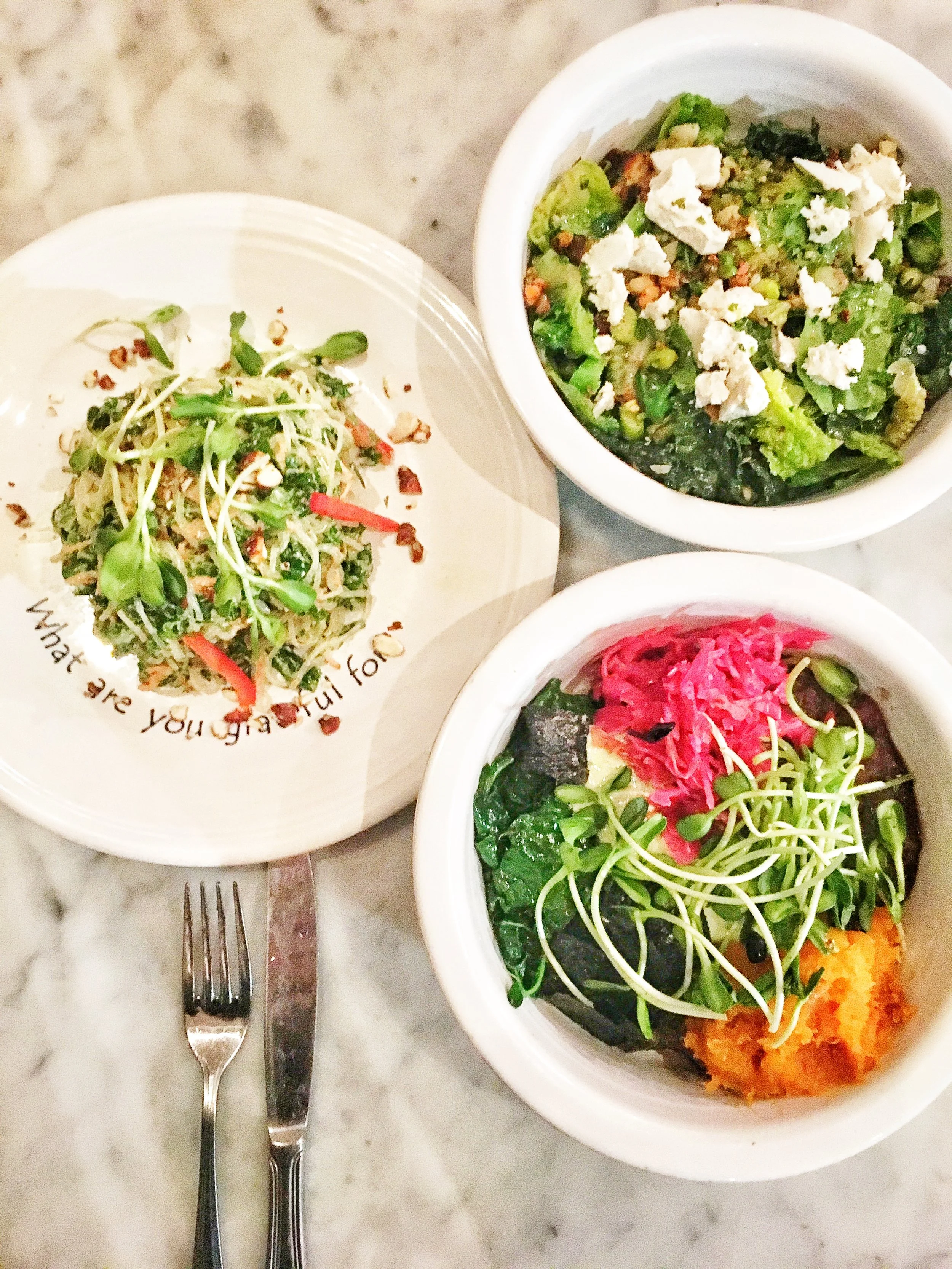In Part 1 of this series, we examined how everything in life has positioned you to fail at developing a healthy relationship with food, and how important it is for you to have patience and treat yourself like you would treat a good friend. Here, we will begin discussing how to start transitioning from a mindless, Standard American Diet (commonly and ironically known as SAD) to a healthier one.
I named this series “an evolving door” because it is common for our relationship with food to change over the years. As a child you live by your parent’s rules. In high school, you eat where everyone hangs out. In college you have a meal plan at school or are just scraping by on Taco Bell bean burritos.
Sometimes the relationship is born out of necessity and sometimes it is born out of environment. Eventually you get to a place where the relationship is born out of choice and sometimes that is earlier than others. I love hearing stories about children who decided to go vegetarian very young when they made the connection between the animals they learned to love and what was on their plate! Sometimes it isn’t born until a dire medical emergency lands you on an operating table with grim prognoses.
However you come to reading this post on relationships with food, your rich story surrounding food is uniquely yours yet commonplace to many of us. You are not alone in your struggles, and realizing it’s time for that next change is just where you need to be.
This series chronicles some of these shifts I encountered which also may help others take more manageable bites into a more plant-based lifestyle. While quitting the SAD cold turkey works for many people (especially those who are needing to reverse their disease immediately for imminent health issues), I have found that many of us need time and bridges. We also need to know that it is ok to keep changing the way we feel about the foods we put in our body.
I’m here to tell you: it is ok! It’s ok that you were convinced last week to add protein powders to your smoothies, and this week you believe that juicing is healthier for you than drinking smoothies. And that next week neither smoothies nor juicing can measure up to eating the fruits and veggies raw.
What is important is you are thinking and you are evolving. You are becoming mindful.
You may spend decades as a food-obsessed meat-eater who lives to eat anything and everything. As you begin to realize the SAD just isn’t cutting it, you may begin to consider a flex lifestyle (more in my other post). In this time, you start to cut down on red meat and highly processed foods. Eventually you get to a point where you are only eating fish or vegetarian most meals. You read the labels on everything. You may stop here and be satisfied with the choices you make and the way your body looks and feels. You may decide that anything past this would be too difficult to maintain in the working world or at home.
One day, you may start to hone in on particular issues in your health that you realize could be optimized with better nutrition. Or you are training for races and don’t seem to be recovering from workouts as quickly as you would like to. You have concerns about the meat supply or mislabeling of fish in the supermarket.
As you continue searching for the answers, they will appear to you in different forms at different times. New ideas may come by way of a friend or a medical journal article in an in-flight magazine. I would invite you to be open to continue learning, growing and expanding upon the knowledge you already have concerning your health and nutrition. There is so much data out there; you have to read everything critically and be open to being wrong about things. After all, we are talking about your health and quality of life here; it’s not like sticking to your guns will hurt anyone but you!
My personal journey lead me from the SAD to a Flex lifestyle to a strict vegan diet to a whole food plant-based eater (the latest). As a vegan, I reached a size and shape that lead me to believe I reached my optimal health. I knew for the first time that I would never struggle maintaining my weight ever again.
Pasta pomodoro at Enantavola in Ravello, Italy, October 2016
What prompted me to write this series was being introduced to more data and research that would cause yet another shift in my relationship with food. In my time as a strict vegan, I experimented with meat alternatives and was just as food-obsessed as I was as a SAD eater; I just was eating cruelty-free alternatives which didn’t always translate into something particularly healthy.
I have now come to learn that these alternatives are great “transition” foods and not something to stay committed to for a lifetime of healthfulness. In fact, optimal nutrition lies in the consumption of whole foods in their natural state without added oils or sugars. Nothing about a Tofurkey at Thanksgiving is a whole food, nor is Daiya cheese: neither of them grow on trees. (Don’t get me wrong: I am totally making another Tofurkey this year for Thanksgiving, but I definitely have learned to live even without cheese alternatives at this point.)
It was this very revelation in the need to eat whole foods that initiated my desire to rethink the way I interact with food. Because if I take out absolutely everything that I am addicted to (oils, sugars, refined carbs), what do I have left? The aspects of the food I have been living for (cupcakes, oil-based dressings and bread), are not the parts of the meal I should be focusing on. It really struck me as an opportunity to reevaluate this relationship that I thought was founded on healthfulness.
As I move into this next phase, I have been rethinking how I want to interact with the food I put in my body. Instead of wasting time on Yelp looking for a restaurant with a vegan key lime pie (they really don’t exist in restaurants so don’t waste your time looking unless you are in Key West, FL), I want to put it into nutritional research as well as developing healthy menus to share with others.
I’m rewiring the circuits in my brain that make me meal obsessed to something that makes me food appreciative. Perhaps the healthiest relationship with food we could ever develop is one in which we truly eat to live…
xxxxxxxxxxxxxxxxxxxxxxxxxxxxxxxxxxxxxxxxxxxxxxxxxxxxxxxxxxxxxxxxxxxxxxxxxxxxxxxx
*Healthspiration*: Perhaps the healthiest relationship with food we could ever develop is one in which we truly eat to live.
*Opportunity Discovery*: Take time to evaluate your life and where food fits into it. If you realize you allocate too much time and energy to the category, decide if you want to change something about it. Maybe it isn’t about the time but rather setting healthy boundaries in your relationship with food. Much like boundaries in a relationship between you and your partner, food deserves the same clear communication of goals so it can live up to your expectations.
xxxxxxxxxxxxxxxxxxxxxxxxxxxxxxxxxxxxxxxxxxxxxxxxxxxxxxxxxxxxxxxxxxxxxxxxxxxxxxxx
Interested in working with a health coach to meet your goals and discover your why? Contact Lorna at Finding Healthfulness to set up a consultation and learn more about the coaching process!
*lovelighthealth*
XXXOOO
-Lorna








As I sit here anxiously awaiting dinner time, I'm asking myself, "Why on earth did I sign up for a 30-day clean eating challenge? Why am I doing this as a plant-based athlete?" I’m not unhappy with my weight. I feel great. And I’ve never loved myself more than I do now (though this doesn’t say much considering where I’m coming from-- more on this some other time).